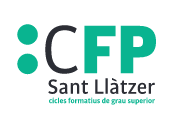Frequency and cost of chemotherapy-related serious adverse effects in a population sample of women with breast cancer / Michael J. Hassett, [i 4 més]
Creator: Hassett, Michael J. [autor] .
.
Material type:  ArticleDescription: 2006.Content type: text Media type: informàtic Carrier type: recurs en líniaISSN: 00278874.New identifier: NLM16912263Subject(s): Càncer de mama
ArticleDescription: 2006.Content type: text Media type: informàtic Carrier type: recurs en líniaISSN: 00278874.New identifier: NLM16912263Subject(s): Càncer de mama| Item type | Current library | Collection | Call number | URL | Status | Date due | Barcode | Course reserves | |
|---|---|---|---|---|---|---|---|---|---|
 Journal article
Journal article
|
Escola Universitària d'Infermeria i Teràpia Ocupacional de Terrassa Internet | En línia | Text complet | Exclòs de préstec | 0010173078966 |
Recursos d'Ajuda per a les persones de suport (Pla antic) 200440 Grau en Infermeria |
20071207
English
There are no comments on this title.


